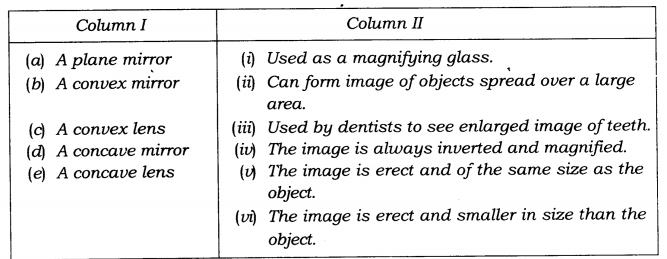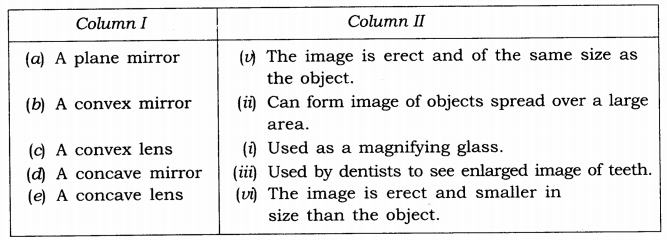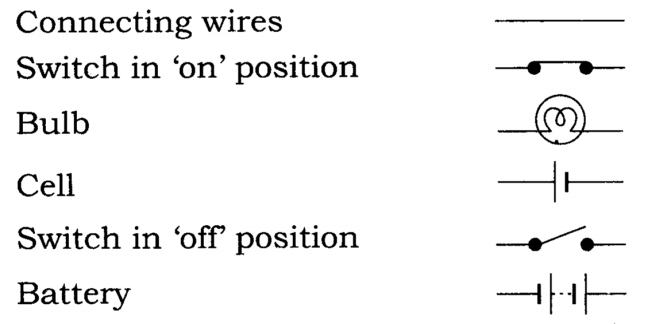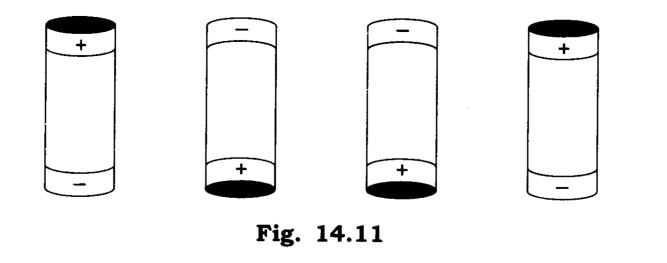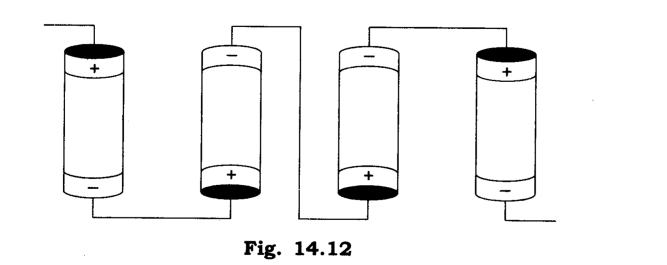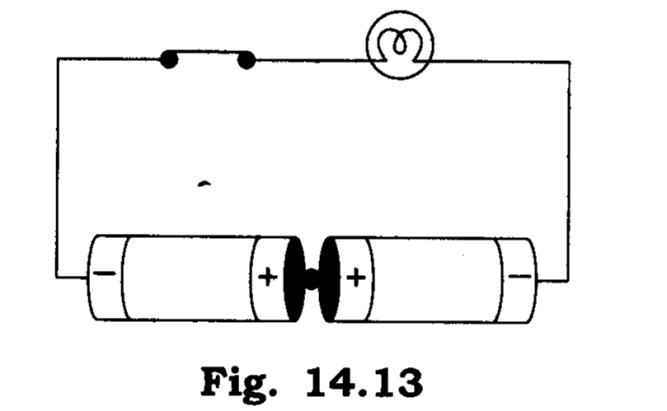Ans.Problem in this circuit is the combination of two cells. In the circuit positive terminal of one cell should be connected with negative terminal of other to make the bulb glow
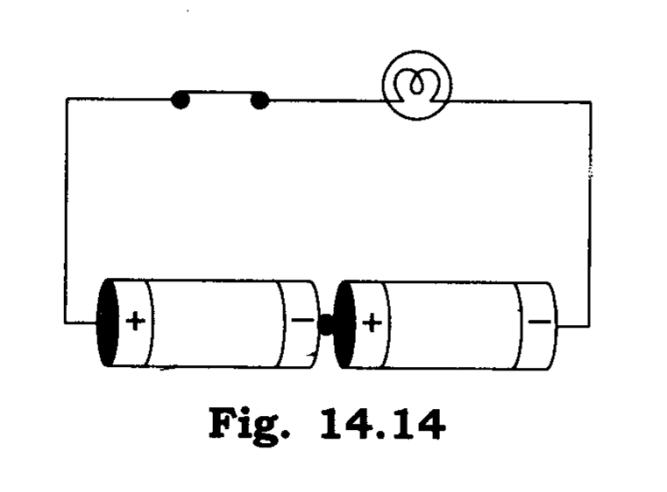
5. Name any two effects of electric current.
Solution:
i) Heating effect of electric current
ii) Magnetic effect of electric current
6. When the current is switched on through a wire, a compass needle kept nearby gets deflected from its north-south position. Explain.
Solution:
When the current is switched on through a wire, magnetic field is created around it hence we see deflection in the compass needle kept nearby.
7. Will the compass needle show deflection when the switch in the circuit shown by Fig.14.24 is closed?

Solution:
No , compass needle does not show deflection when the circuit is a closed, magnetic field is not created until current is flowing through the circuit.
8. Fill in the blanks:
(a) Longer line in the symbol for a cell represents its terminal.
(b) The combination of two or more cells is called a .
(c) When current is switched ‘on’ in a room heater, it .
(d) The safety device based on the heating effect of electric current is called a .
Solution:
(a) Longer line in the symbol for a cell represents its positive terminal.
(b) The combination of two or more cells is called a battery.
(c) When current is switched ‘on’ in a room heater, it produces heat .
(d) The safety device based on the heating effect of electric current is called a fuse .
9. Mark ‘T’ if the statement is true and ‘F’ if it is false:
(a) To make a battery of two cells, the negative terminal of one cell is connected to the negative terminal of the other cell. (T/F)
(b) When the electric current through the fuse exceeds a certain limit, the fuse wire melts and breaks. (T/F)
(c) An electromagnet does not attract a piece of iron. (T/F)
(d) An electric bell has an electromagnet. (T/F)
Solution:
a) False
b) True
c) False
d) True
10. Do you think an electromagnet can be used for separating plastic bags from a garbage heap? Explain.
Solution:
No, because plastic does not have magnetic property to get attracted to a magnet hence magnet cannot be used to separate plastic bags.
11. An electrician is carrying out some repairs in your house. He wants to replace a fuse by a piece of wire. Would you agree? Give reasons for your response.
Solution:
It is not a wise idea to replace fuse by a piece of wire, as it has very low melting point. In case of metal piece, melting point will be high and the circuit will be intact in case there is overload or overheat.
12. Zubeda made an electric circuit using a cell holder shown in Fig. 14.4, a switch and a bulb. When she put the switch in the ‘ON’ position, the bulb did not glow. Help Zubeda in identifying the possible defects in the circuit.Solution:
Reasons maybe two
i) The connecting wire may be loose
ii) The electric cell may be used up
iii) switch may not be functioning well
iv) cell power has been exhausted
13. In the circuit shown in Fig. 14.25

(i) Would any of the bulb glow when the switch is in the ‘OFF’ position?
(ii) What will be the order in which the bulbs A, B and C will glow when the switch is moved to the ‘ON’ position?
Solution:
i) No, the bulb will not glow as the circuit is not complete when the switch is off
ii) If the switch is On positions, all the bulbs glow simultaneously.



